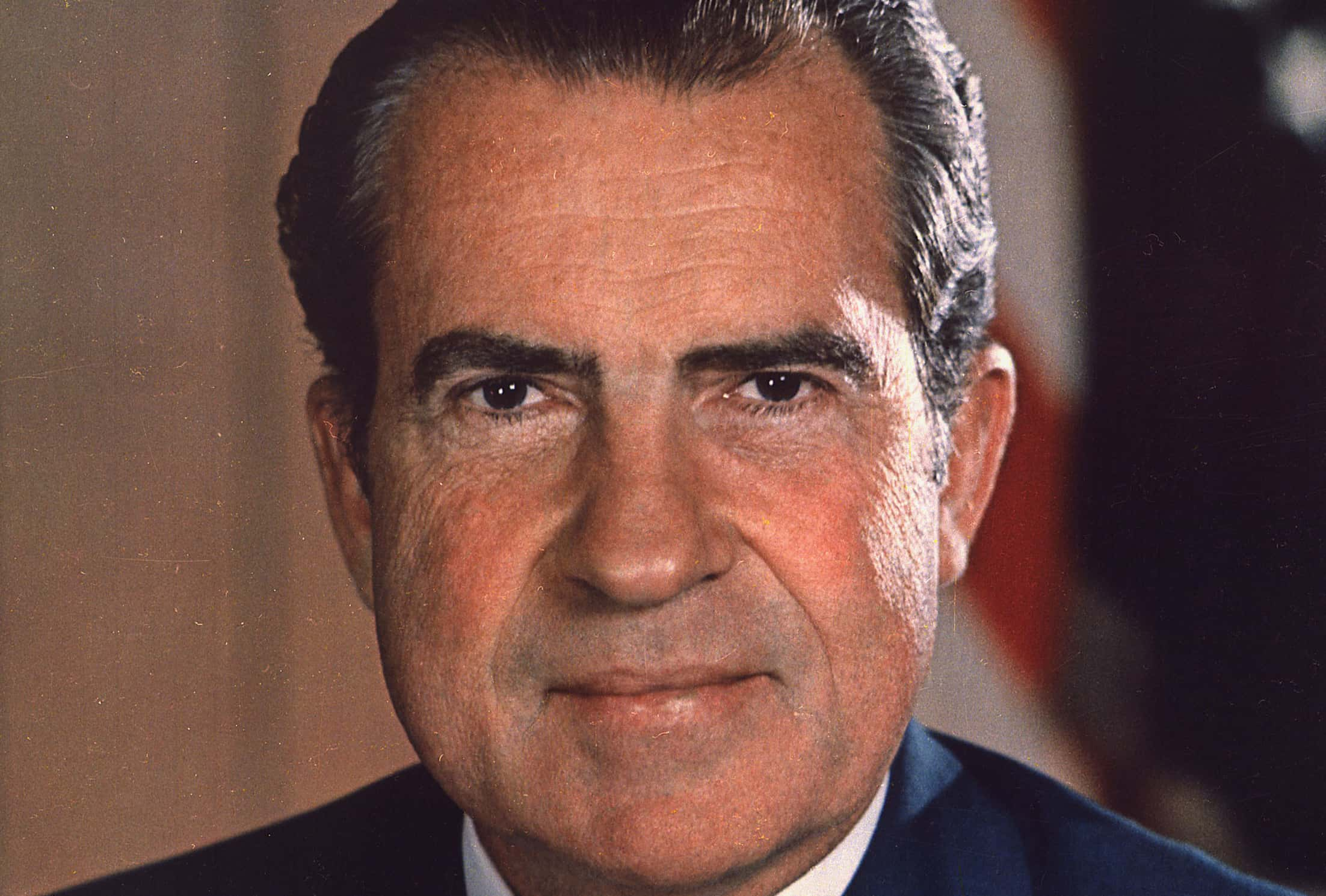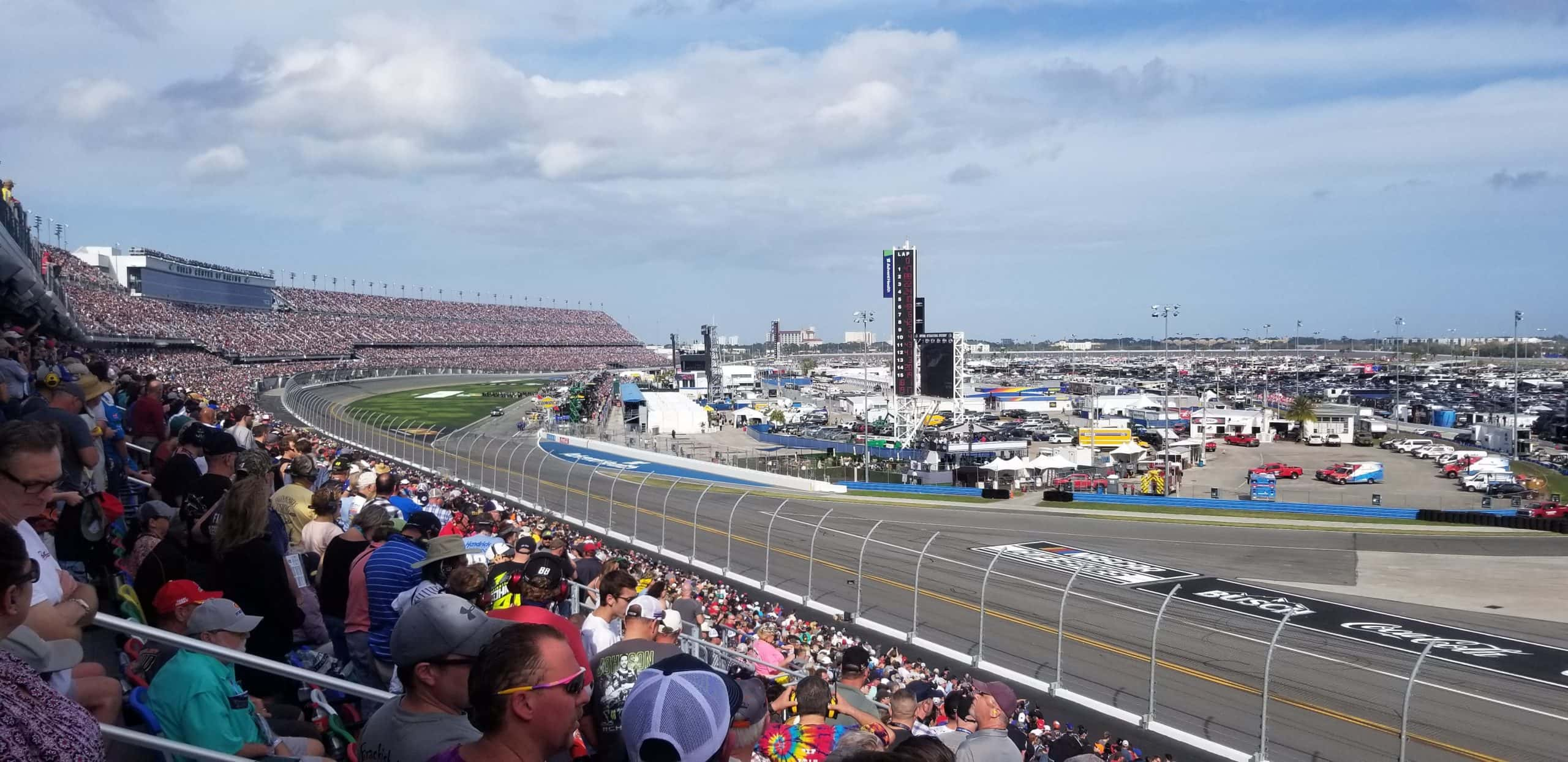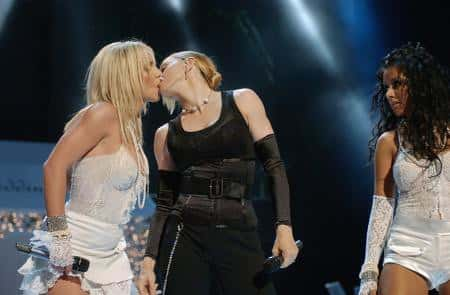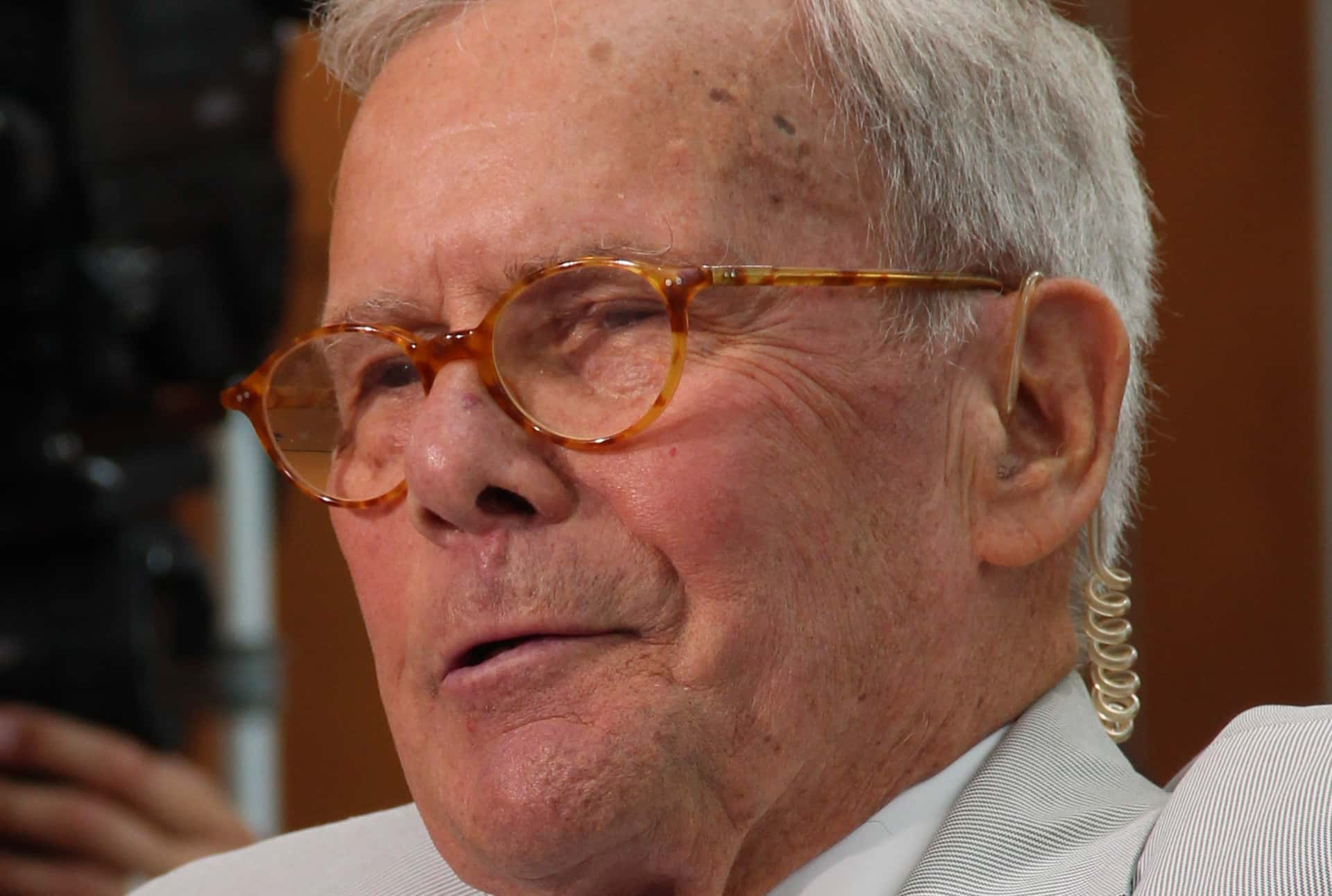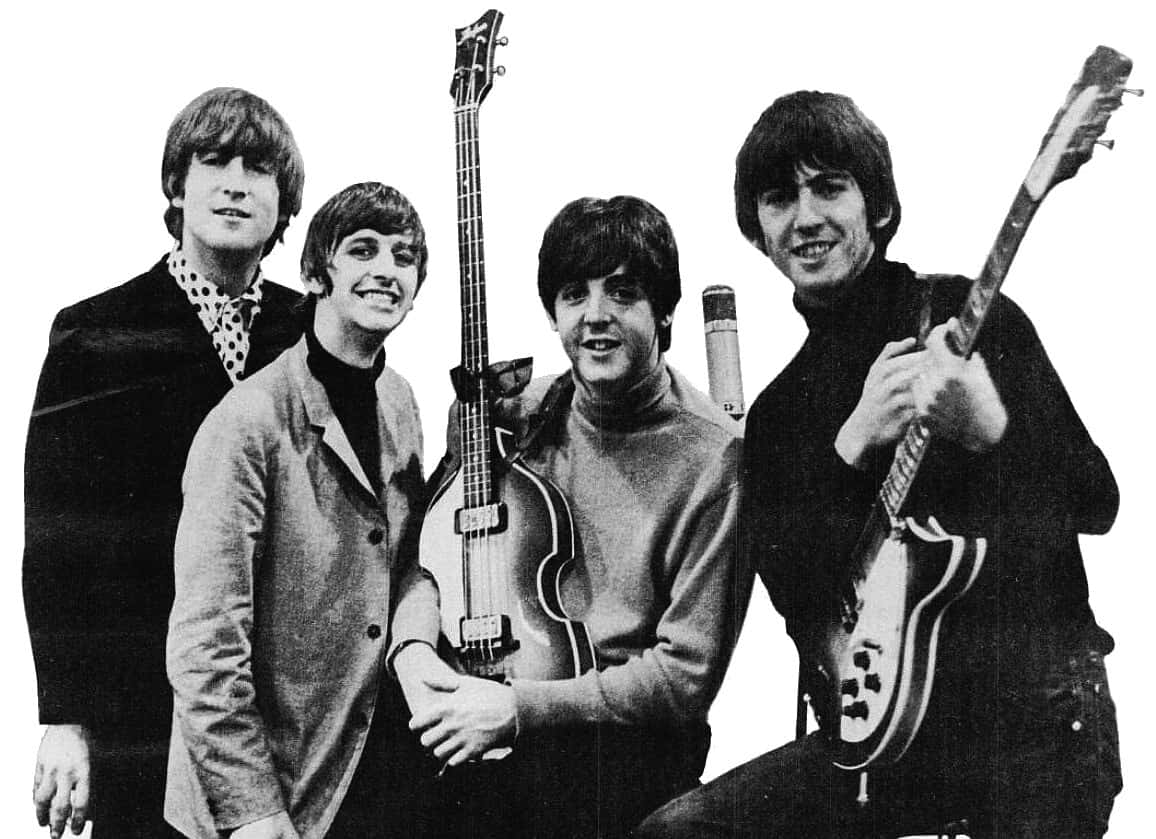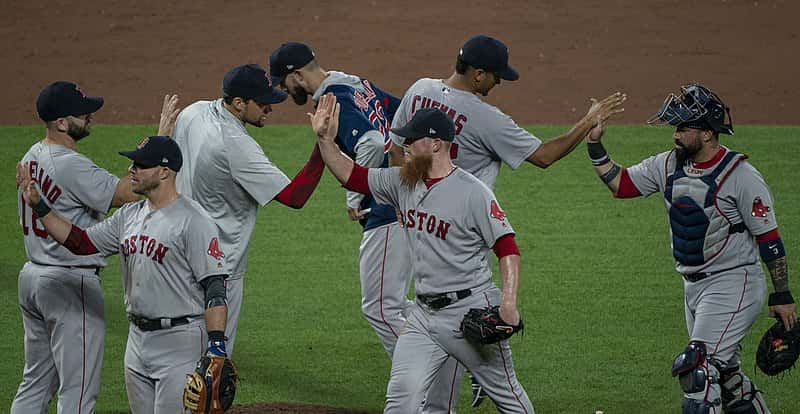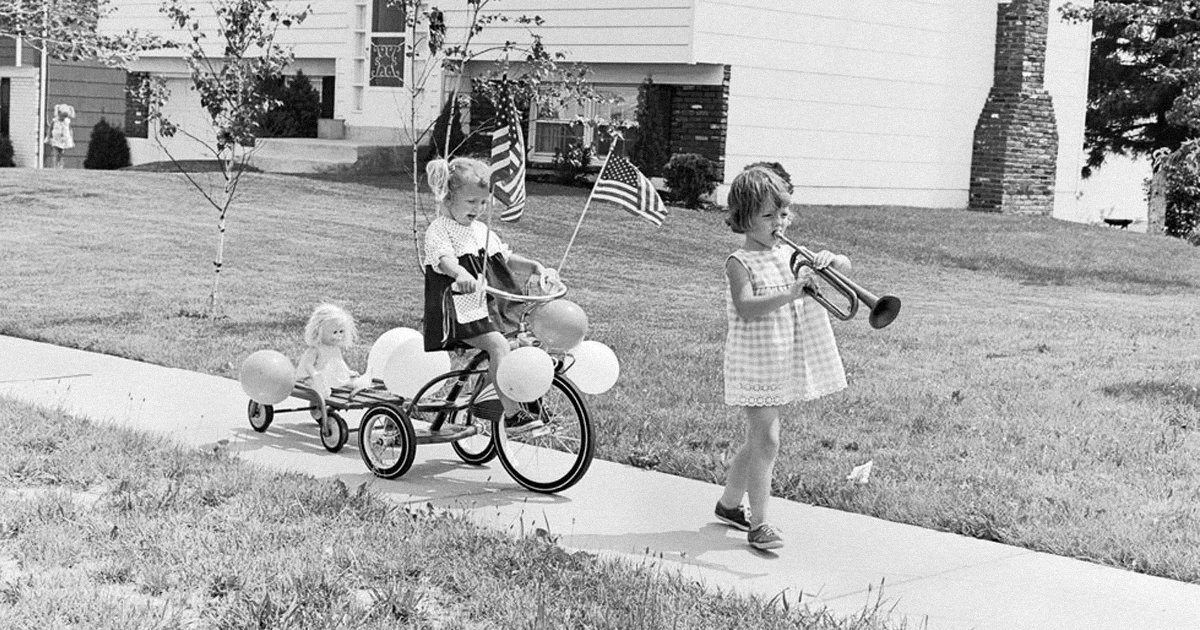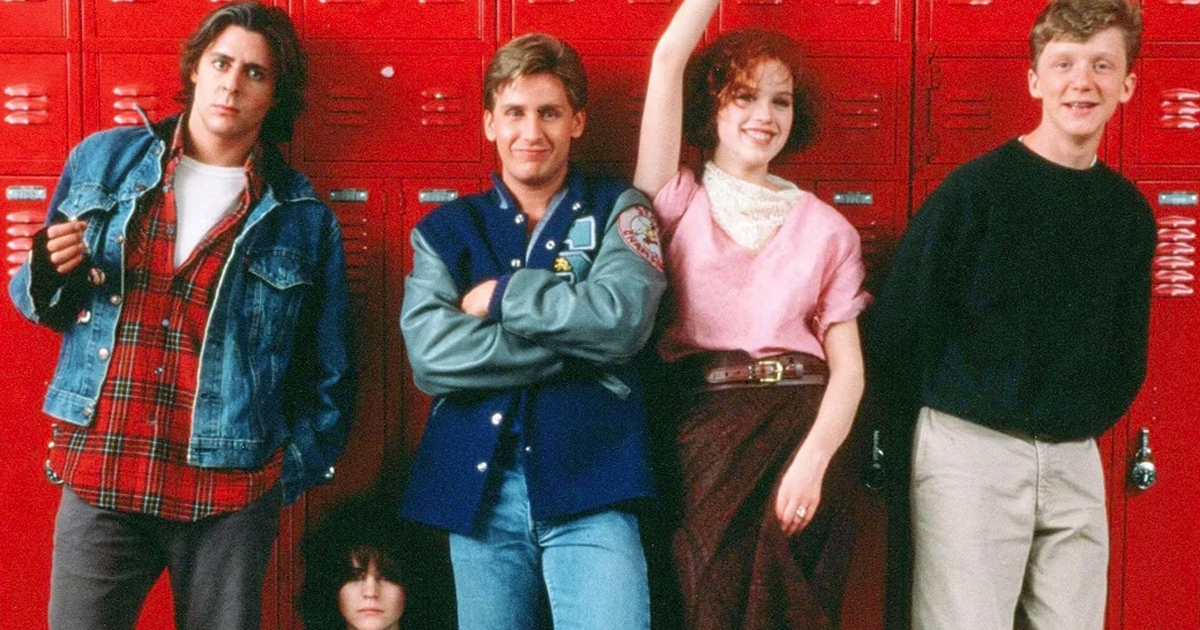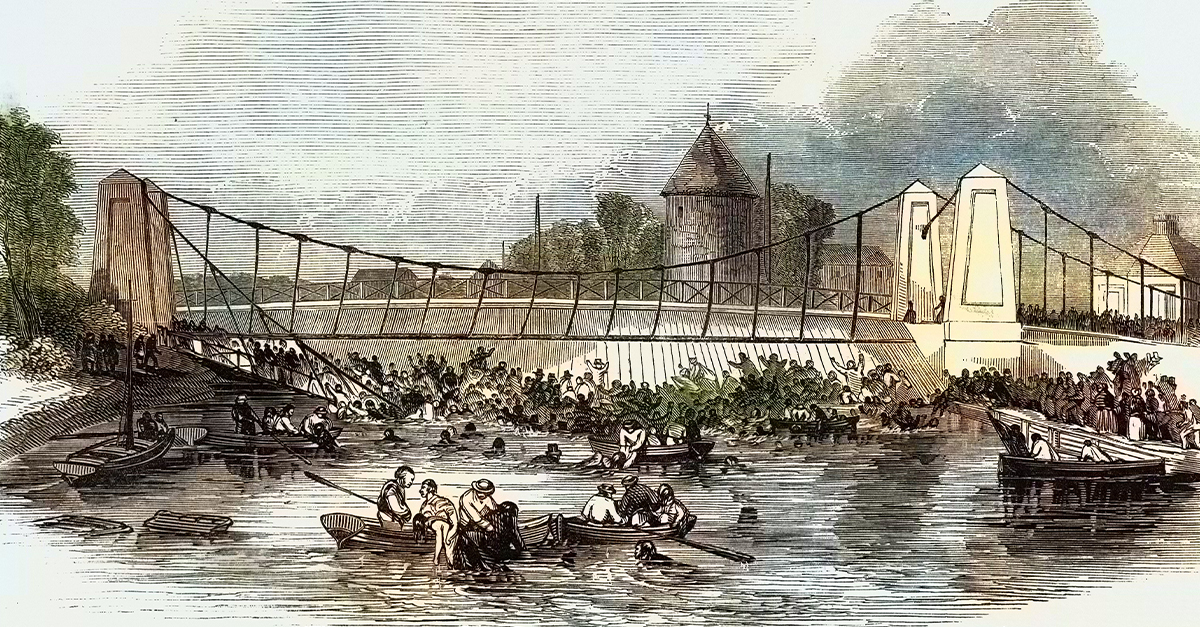“Live television is always stressful and the more you do it, the more you realize what can go wrong".—Alan Hansen.
In the early days of television, most programming aired live—and wasn’t recorded in any storable format! Even as pre-taped scripted shows became more popular in the 1960s and 70s, live sports, news, variety shows, and other event-based programming continued to make up a large portion of TV content. With the rise of time-shifting through on-demand services, Digital Video Recording (DVR), and streaming TV, live viewing isn’t as common as it once was—but live broadcasts still give us some outrageous stuff! From nip-slips to earthquakes and slip-ups to assassinations, let’s take a trip through television history and look at 40 of the most shocking live TV moments.
1. La La Loser
Award shows can be long, boring affairs. But at the 2017 Academy Awards, an envelope mix-up led to Warren Beatty and Faye Dunaway announcing the wrong winner for Best Picture. La La Land producer Jordan Horowitz had time to give a full acceptance speech before someone informed him of the mistake. Moonlight for the win!

2. Missing Miss Universe
In another award SNAFU, host Steve Harvey announced the wrong winner of the 2015 Miss Universe pageant. After initially awarding the crown to Miss Columbia, Harvey went backstage, where he was alerted to the mistake. Harvey took the stage again to rectify the error and award the crown to Miss Philippines.
3. World Series Shakeup
As fans filled Candlestick Park in San Francisco for game 3 of the 1989 World Series, ABC’s broadcast was just getting underway. A few minutes later, a 6.9 magnitude earthquake hit the city, causing the live feed to cut out amid panicked screams from the stadium. The “World Series Earthquake” took the lives of over 60 people and injured thousands more, and it was the first quake ever caught on live TV.
4. One Small Step
Neil Armstrong’s “small step for man” on July 20, 1969, is one of the most iconic moments of the 20th century. NASA had worked for years on the technology to broadcast live from space, and it paid off during the Apollo 11 mission. More than 600 million people around the world tuned in for the lunar landing, making it a key part of the live TV zeitgeist.
5. Three Shots Fired
On November 22, 1963, CBS interrupted their regularly scheduled programming for a live announcement by news anchor Walter Cronkite: “From Dallas, Texas, a flash, apparently official, President Kennedy died at one p.m., central standard time, two o’clock eastern standard time, some 38 minutes ago". As evidenced by Cronkite’s gut-wrenching delivery of the news, Kennedy’s assassination would change the course of 20th-century history.
 Wikipedia
Wikipedia
6. 9/11
It was one of the most shocking days in American history. After reports of a plane colliding with the World Trade Center, every news network was on site, broadcasting the horrific aftermath of American Airlines flight 11. But before anyone could make sense of what was happening, a second plane, United Airlines flight 175, crashed into the other World Trade Center tower. The live coverage of September 11, 2001, was truly a haunting day of television.
7. Goodbye, Rich
Richard M. Nixon resigned from the office of the President of the United States on August 9, 1974. He is the only president ever to do so, and the event was captured on live TV. Nixon’s resignation speech came after his involvement in the Watergate scandal, which he downplayed in the speech. The broadcast was seen by 90 million American viewers.
8. Bucking Bronco
OJ Simpson’s trial for the murders of Nicole Brown and Ron Goldman was one of the most infamous cases of the 1990s, at least partially due to the surreal car chase that led to Simpson’s arrest. An estimated 95 million TV viewers watched at least some of the live chase between the LAPD and Simpson in his white Ford Bronco, which ended with his surrender after about 120 minutes.
 Wikimedia.Commons
Wikimedia.Commons
9. High-Speed Fatality
Nothing is more horrific than watching someone lose their life on live TV. During the 2001 Daytona 500, Dale Earnhardt lost control of his car and hit a concrete wall at 150 mph, dying on impact. The race ended seconds later, and the live broadcast continued, with announcers uncertain of Earnhardt’s fate. This tragic event, witnessed by 17 million TV viewers, sparked a wave of safety reform for NASCAR in subsequent years.
10. The Oscars Streaker
As host David Niven prepared to introduce Elizabeth Taylor at the 1974 Academy Awards, a male streaker appeared on stage and gave viewers in the theatre and at home quite the shock. It turns out the man was conceptual artist and gay rights activist Robert Opel. The stunt brought Opel a lot of attention, and he went on the found Fey-Wey Studios, the nation’s first openly gay art gallery. Sadly, Opel was slain in 1979 during an armed theft of his studio.
11. The Waco Siege
On February 28, 1993, a raid on a religious compound in Waco, Texas, left 10 people deceased and ignited a 51-day standoff between the Branch Davidians and federal agents. TV crews and journalists camped on location, providing near-constant coverage of the event. On April 19, 1993, the standoff ended when the FBI placed tear gas in the Mount Carmel facility, which led to a massive fire which burnt down the compound and took the lives of 76 people—all broadcast live on TV.
12. Setlist Switchup
Saturday Night Live has been a television staple for over forty years, racking up plenty of shocking moments. One of the most famous was Elvis Costello’s decision to change songs mid-performance. A few lines into “Less Than Zero,” Costello stopped the band, said “I’m sorry, ladies and gentlemen, there’s no reason to do this song here,” and launched into his lesser-known song, “Radio Radio". The last-minute change created serious tension between Costello and SNL, and he was banned for the show for over two decades.
13. Miracle on the Hudson
On January 15, 2009, US Airways flight 1549 struck a flock of geese and lost all engine power. Unable to make it to a nearby airport, pilots Chesley “Sully” Sullenberger and Jeffrey Skiles managed to glide the plane into the Hudson River, avoiding any casualties—the flock of geese notwithstanding. These heroics were captured on live TV, and they went on to form the basis of the 2016 film Sully.
14. Slip of the Tongue
MTV’s Video Music Awards have always been known to pack some surprises and push boundaries of live TV. In 2003, pop icon Madonna performed with Britney Spears and Christina Aguilera. Madonna was sporting a black leather ensemble, with Spears and Aguilera in bridal attire. At the end of the performance, Madonna kissed her co-performers passionately, shocking the audience and viewers at home. This provocative moment remains one of the most memorable in VMA history.
15. Moneta Murders
Alison Parker and Adam Ward were part of the Roanoke, Virginia news team. Vester Lee Flanagan (AKA Bryce Williams) was their former coworker who had been fired in 2013 for misconduct. On August 26, 2015, Parker was conducting a live interview in Moneta, Virginia, and Ward was the cameraman. During the interview, Flanagan fatally shot Parker and Ward, and it was all captured live before the CBS affiliate cut to a confused anchor in the studio.
16. Last Laughs
What’s worse than dying of a heart attack while performing on stage? Maybe it’s dying of a heart attack while the crowd cheers, thinking it’s part of the act. That’s exactly what happened to British comedian Thomas Frederick Cooper in 1984. Cooper was performing his act on Live From Her Majesty’s when he went into cardiac arrest and perished on the scene to the sound of a laughing audience.
 Shutterstock
Shutterstock
17. Mourning a Princess
Princess Diana’s tragic demise in a car accident at the age of 36 stunned the world. Even after her divorce from Prince Charles a year earlier, Diana was a beloved figure, admired for her charity work and social advocacy. Her funeral on September 6, 1997, was aired live and watched by an estimated 2 billion—yes, that’s BILLION—people around the world.
 Wikipedia
Wikipedia
18. Tear Down That Wall
Perhaps the most important political moment of the 20th century, the collapse of the Berlin Wall signaled the end of the decades-long Cold War. Tom Brokaw was famously the first news anchor on site to cover the event, and his broadcast soon became an important part of the global memory of November 9, 1989.
19. A Hopeful Inauguration
Presidential inauguration ceremonies are often seen as tedious formalities, but when President Barack Obama took office in 2009, the broadcast set a record for such events, bringing in a viewership of 37.8 million people. This was a truly historic moment, celebrating the first black US president and ringing in an new era of hope for the country.
20. Nipplegate
Wardrobe malfunctions are responsible for plenty of shocking TV moments, but none is more famous than Janet Jackson’s “nip slip” at the 2004 Super Bowl. During their duet, Justin Timberlake reached over and ripped off a portion of Jackson’s costume, revealing her bosom—which was actually covered by a nip shield. While the moment was officially deemed a wardrobe malfunction, there are many who believe the moment was planned, leading some to call that fateful performance “Nipplegate".
21. Samurai Assassin
In 1960, during a live televised political debate in Japan, 17-year-old Otoya Yamaguchi rushed on stage, stabbing and slaying Inejiro Asanuma. Yamaguchi used a yoroidōshi, a traditional samurai longblade. He was a student and right-wing political extremist, and Asanuma was the leader of Japan’s socialist party at the time. Yamaguchi took his own life in the cell of a juvenile detention center a few weeks later.
22. Miracle on Ice
Olympic sports give nations something to rally behind, and there was no more exciting moment in US Olympic history than the 1980 “``,” when the US men’s hockey team defeated the previously dominant Soviet team. The live broadcast has become iconic in sports history, with the game’s nickname coming from Al Michael’s famous line, “Do you believe in miracles? Yes!”
 Wikimedia.Commons
Wikimedia.Commons
23. Oswald’s Assassin
Two days after the assassination of JFK, Lee Harvey Oswald was being transferred from a city detention center to a county one, and the event was being covered live by news crews. Enter Jack Ruby, a local nightclub owner, who made his way through the crowd, then fatally shot Oswald in front of the entire nation. Ruby claimed the assassination was motivated by extreme grief over JFK’s murder, though there are plenty of conspiracy theories that tell a different story. Either way, it was a shocking moment in live TV history.
24. Saving Baby Jessica
Nowadays, we are more than used to a 24-hour news cycle. But in 1987, it was rare to see stories that captured that kind of constant news attention. When 18-month-old Jessica McClure fell into a well, CNN broadcast constant coverage of the 2-day long debacle and rescue mission, making “Baby Jessica” the center of everyone’s attention. Here’s to a happy ending!
25. Inspirational Ali
Muhammad Ali was one of the most beloved American athletes of the 20th century. He was not only a champion boxer but a vocal political figure and peace advocate. After being diagnosed with Parkinson’s disease, Ali’s time in the spotlight was more limited. But at the 1996 Olympic Opening Ceremony, he made a surprise appearance, taking the Olympic torch from Janet Evans and lighting the symbolic cauldron in downtown Atlanta. This truly inspirational moment is a testament to Ali’s iconic status as an American hero, and viewers around the world were able to witness it happen live.
 Wikimedia.Commons
Wikimedia.Commons
26. President Al Gore?
We’ve seen some pretty hilarious mix-ups regarding winners of awards in this list, but none compares to that time that we all thought Al Gore was president—because they said so on TV! In November 2000, several news networks were calling the election in Gore’s favor. They later recanted, and election night ended without the announcement of a clear winner. Of course, George W. Bush would go on to win the presidency, but for a brief moment in time, we had President Gore.
27. Hips that Shook a Nation
We all know the stories about Elvis Presley’s famous gyrating hips. Variety host Ed Sullivan was reticent to put him on the show after seeing those hip moves on a competing show. But for the sake of ratings, Sullivan brought Presley onto his show on September 9, 1956. The performance was an instant hit, though the sensual connotations of his dancing remained controversial. By his third performance on The Ed Sullivan Show, producers were forced to film Presley only from the waist up—those are some serious hips!
28. The British Are Coming!
The Beatles’ first live US television performance may not have been shocking per se, but it certainly ignited a shockwave of Beatlemania in North America. The 1964 performance on The Ed Sullivan Show ignited the British Invasion of rock and roll, bringing in 73 million viewers—over 45% of households had their televisions tuned in.
29. Tsunami Strikes
In 2011, CNN reporters were covering the aftermath of a powerful 9.0 earthquake in Japan. Live broadcasts captured the landfall of a giant tsunami, with waves as high as 30 feet, rushing into coastal cities. In addition to official live TV coverage, the popularity of cell phones in Japan made the tsunami one of the most recorded natural disasters in history. The harrowing videos shocked the world but also gave an unprecedented first-hand look at the realities of such large-scale destruction.
30. The Lottery No One Wants to Win
By December 1969, America’s involvement in the Vietnam War was extremely controversial. With support for the conflict waning and the need for more servicemen, the US government implemented an involuntary draft, and broadcast “The Draft Lottery” live on television. The numbers drawn corresponded to specific birth dates, and if yours came up, it was off to battle you went. Imagine the tension of tuning in to this “lottery” and wondering who of your friends and family would be shipped off—The Hunger Games, anyone?
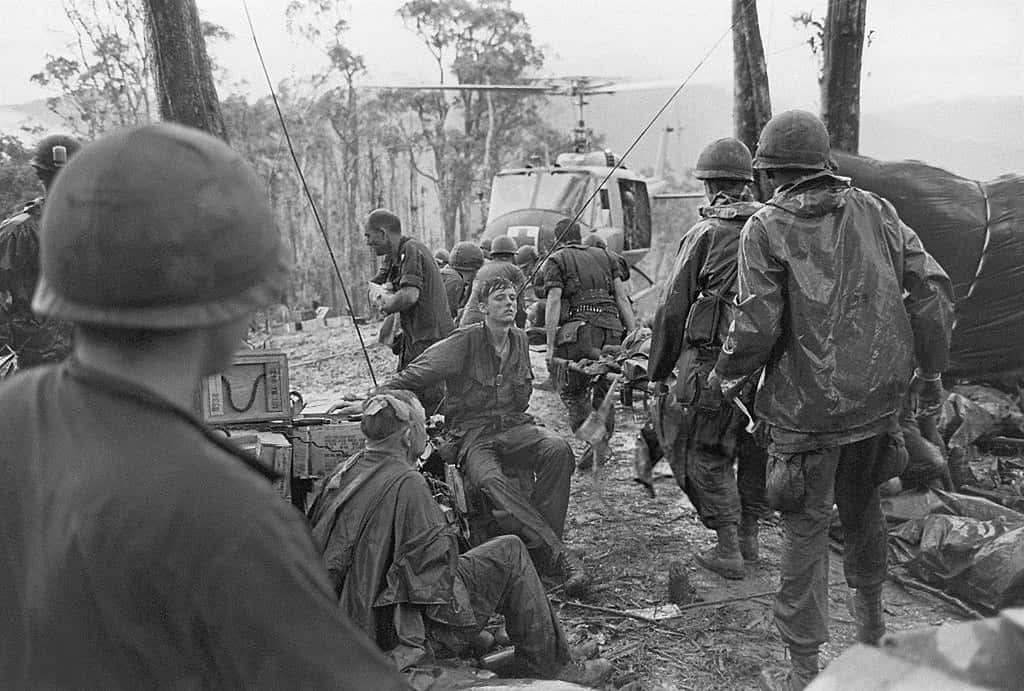 Flickr
Flickr
31. Munich Murder
During the 1972 Olympic Games in Munich, a militant group known as Black September took members of the Israeli Olympic team hostage, and the two-day ordeal was broadcast live. In an odd scenario only possible with modern mass media, the terrorists were able to watch the broadcast of their own exploits as they were happening, which helped them prepare for the law enforcement response. 11 people were slain, and though the actual murders were not seen on TV, the live broadcast of the ordeal was still a chilling experience for viewers around the world.
32. Rioting for Rodney King
After four law enforcement officers were acquitted for the brutal beating of Rodney King, the city of Los Angeles broke into six days of rioting while the rest of the country looked on in horror. Most regularly scheduled programming was cut in favor of constant coverage of the city in turmoil. By the end of the week, 53 people had been slain and thousands more injured. The surreal coverage of what came to be known as the LA Riots is some of the most shocking live television ever to air.
33. Kick Six
It seemed like the 2013 Iron Bowl was going into overtime until Alabama’s head coach challenged the timekeeping in order to get one second back on the clock. Boy, would he regret it. Alabama missed a field goal attempt, and Auburn’s Chris Davis returned the kick for 109 yards and a game-ending touchdown. Even better than the run itself is the absolutely ecstatic Auburn announcer calling the play and shouting “Oh my lord in heaven!”
34. Filet-O-Flesh
For the first episode of a 2011 Dutch TV show Proefkonijnen (translation: “Guinea Pigs”), the co-hosts underwent minor surgeries to remove bits of their flesh. Then, a guest chef fried the flesh for the hosts’ gustatorial pleasure. The stunt caused some controversy since cannibalism is technically against the law, but the voluntary nature of the challenge meant that no one got in trouble.
35. The Ill-Fated Challenger
The Space Shuttle Challenger’s tenth mission had drawn media attention due to the presence of Christa McAuliffe on the crew. McAuliffe was a social studies teacher from New Hampshire and the first and only person selected for the “Teacher in Space” program. On January 28, 1986, the Challenger launched from Cape Canaveral, then disintegrated 73 seconds into the mission, killing all seven crew members. NASA had arranged for a special feed of the launch to be broadcast in schools across the United States, so many children of the era saw the event live and still carry that horrific memory.
36. No Way Out
It is undoubtedly one of the most gruesome and shocking moments of live TV. Pennsylvania politician Budd Dwyer had been accused of 11 counts of misconduct and was facing 55 years in prison. At a press conference the next day, he put a revolver in his mouth and pulled the trigger, ending his life instantly. The video is available on YouTube, but I do not recommend watching it. Dwyer was later found innocent of the accused offenses, but his final act ensured that his family would receive his government pension and benefits.
37. Curt Schilling’s Bloody Sock
In the 2004 MLB American League Championship Series, the Boston Red Sox were fighting to make a historic comeback—spoiler alert: they did, and won the World Series! In game six of the ALCS, veteran Curt Schilling famously pitched through a serious ankle injury. Viewers at home saw a bloody splotch on Schilling’s sock grow with every inning. Despite the injury, Schilling allowed only one run in seven innings, positioning his team to win the game, and eventually the World Series.
38. Conspiracy at Gunpoint
On August 20, 1987, Gary Stollman, son of a former KNBC employee, walked onto the set of the network’s live news broadcast and held anchor David Horowitz at gunpoint—with a fake pistol. Horowitz didn’t know it was fake, so he proceeded to follow Stollman’s demand of reading a 4-page letter, outlining various conspiracy theories about the CIA, aliens, and cloning. After Horowitz finished reading the statement, Stollman dropped the pistol and was apprehended on the spot.
39. Pardon the Interruption
Max Headroom was a fictional character created in 1985 for a TV movie, and its popularity sparked multiple spinoffs. Headroom, a humanoid A.I., was created as a parody of contemporary TV personalities. This made the character the perfect vehicle for a broadcast signal intrusion by two unknown individuals. On November 22, 1987, two Chicago TV stations were hijacked, and the signal was replaced with an image of a person in a Max Headroom costume. In the second signal intrusion, the perpetrator ranted about mass media and exposed their buttocks—pardon the interruption, indeed!
 Flickr
Flickr
40. Horror in Living Color
A few weeks before Christine Chubbuck shot herself on live TV, the news anchor requested to do a piece on self-harm. She even interviewed the local sheriff about methods of taking one's own life. Then, on July 15, 1974, as she was delivering the news, she broke from the script and announced: “In keeping with Channel 40’s policy of bringing you the latest in ‘blood and guts’, and in living color, you are going to see another first—attempted suicide". With that chilling critique of news media, Chubbuck then shot herself in the head and perished in the studio.
 Wikipedia
Wikipedia
Sources: 1, 2, 3, 4, 5, 6, 7, 8, 9, 10, 11, 12, 13, 14, 15, 16, 17, 18, 19, 20, 21, 22, 23, 24, 25, 26, 27, 28, 29, 30, 31, 32, 33, 34






